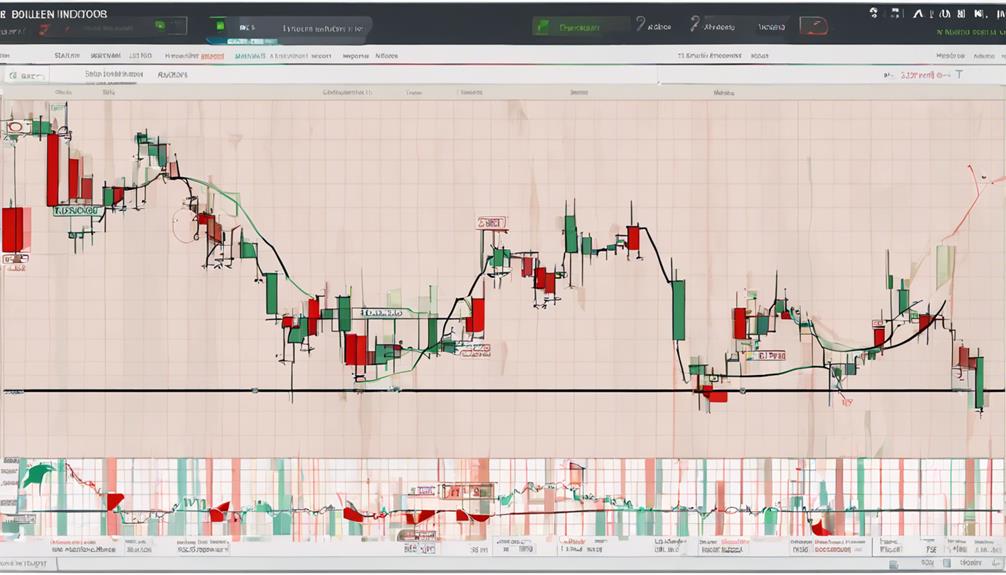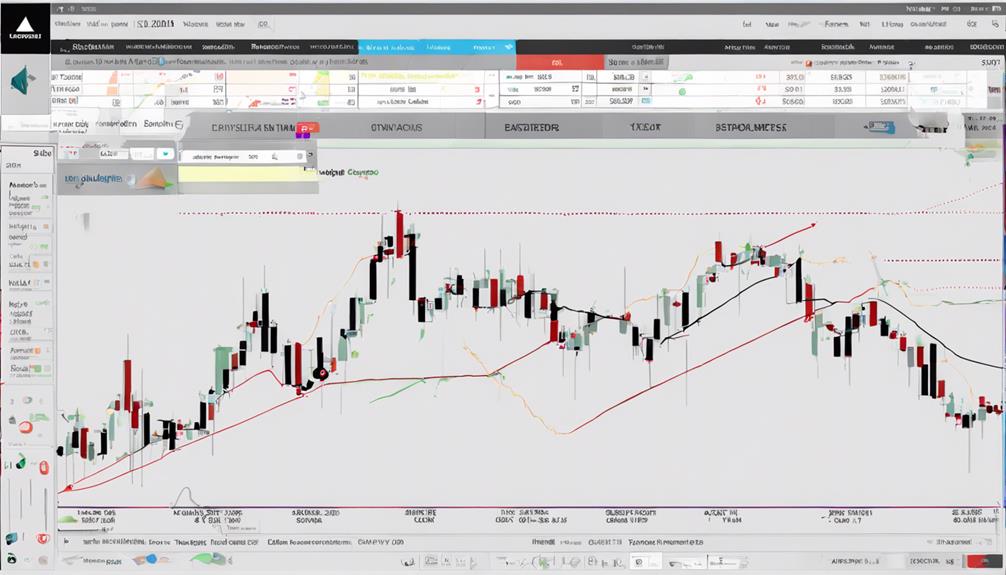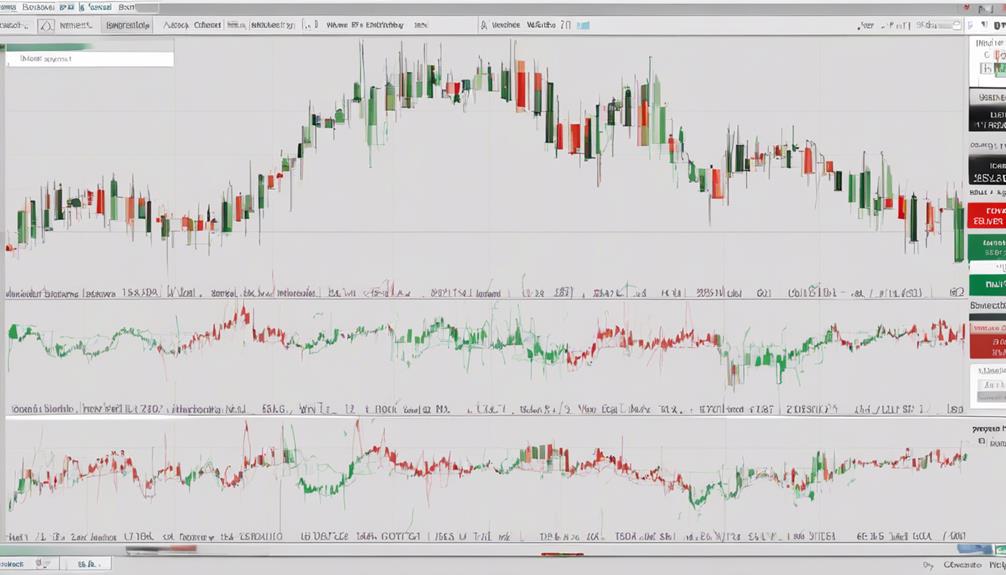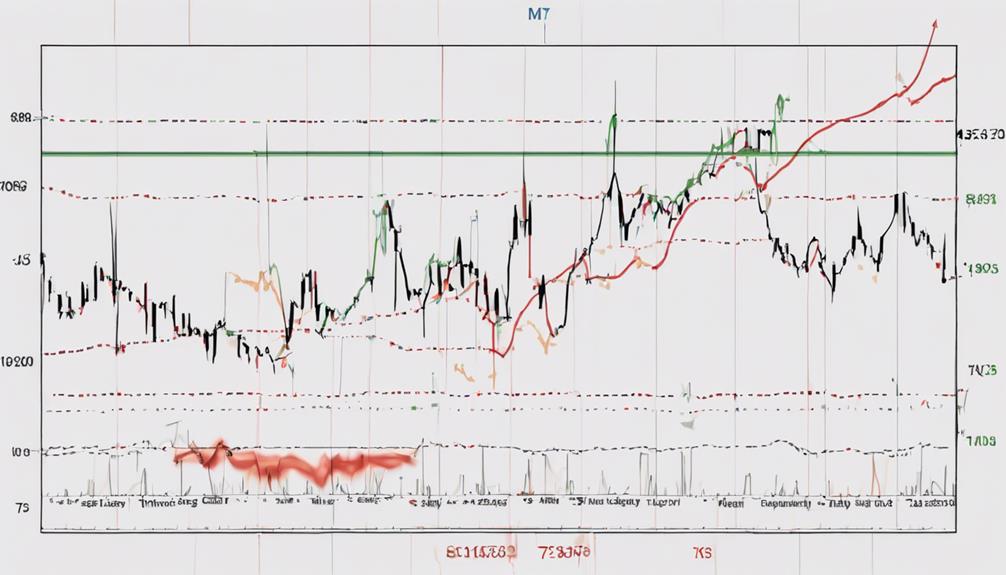The realm of finance is a dynamic landscape where market volatility can either pose challenges or present opportunities for traders. Understanding how volatility indicators function and their practical implementation is crucial for navigating this ever-changing environment.
By grasping the nuances of these indicators, traders can gain a competitive edge and enhance their decision-making processes. Stay tuned to explore the nuanced strategies and real-world applications that can transform volatility from a potential risk into a valuable asset in the trading world.
Benefits of Using Volatility Indicators
By providing key insights into market volatility, volatility indicators play a crucial role in assisting traders with informed decision-making processes. These technical analysis tools help traders in managing risk by setting appropriate stop-loss levels, thus safeguarding their portfolios against adverse price movements.
Additionally, volatility indicators aid traders in anticipating market sentiment and potential price breakouts or reversals, enabling them to adjust their strategies accordingly. By incorporating volatility indicators, traders can enhance their trade entry and exit points, leading to improved timing and potentially higher profitability.
This strategic use of volatility indicators not only assists in maximizing returns but also minimizes losses by providing a structured approach to market participation. Overall, the benefits of utilizing volatility indicators extend beyond mere technical analysis, contributing significantly to traders' ability to navigate the dynamic landscape of financial markets with confidence and precision.
Implementing Volatility Indicators in Trading

Utilizing various volatility indicators such as Bollinger Bands, Keltner Channels, and Donchian Channels is essential for tracking price volatility and identifying potential trading opportunities in the financial markets. Traders can benefit from indicators like the Average True Range (ATR) to set effective stop-loss orders, helping manage risk amid price fluctuations.
These indicators not only assist in determining optimal entry and exit points by signaling potential breakouts or reversals but also enable traders to analyze market sentiment using tools like the Volatility Index (VIX). By anticipating shifts in volatility levels, traders can adapt their strategies accordingly.
Incorporating volatility indicators into trading strategies allows for flexibility in responding to changing market conditions, ultimately enhancing overall trading performance. This data-driven approach empowers traders to make informed decisions based on the insights provided by volatility indicators, thus improving their ability to navigate the dynamic landscape of financial markets.
Real-World Examples of Volatility Indicator Application

Real-world scenarios demonstrate the practical application of volatility indicators in analyzing market dynamics and identifying trading opportunities effectively. Traders often apply Bollinger Bands to detect potential breakouts and price volatility, especially in forex trading where sudden price movements are common.
By utilizing the Average True Range (ATR) indicator, traders can set stop-loss orders that align with the current market volatility levels, helping to manage risk more effectively.
Moreover, the Volatility Index (VIX) serves as a valuable tool for assessing market sentiment and predicting potential price fluctuations. Traders can leverage this indicator to make informed decisions based on the overall volatility expectations in the market.
Additionally, implementing Keltner Channels allows traders to evaluate trends and reversals by measuring volatility levels within their trading strategies. Similarly, Donchian Channels are useful for tracking support and resistance levels, aiding in the identification of breakout opportunities in the market.
These real-world examples showcase how volatility indicators play a crucial role in enhancing trading strategies and decision-making processes.
Strategies for Utilizing Volatility Indicators

Strategically incorporating volatility indicators enhances market analysis and trading decision-making processes by providing valuable insights into price movements and potential opportunities. Traders can utilize Bollinger Bands to identify periods of high or low volatility, indicating potential breakout points for trading decisions.
Implementing Average True Range (ATR) allows traders to measure the volatility of price movements accurately, aiding in setting effective stop-loss orders to manage risk.
The Volatility Index (VIX) is instrumental in gauging market sentiment and anticipating shifts in market volatility, helping traders adapt their strategies accordingly.
Keltner Channels provide a useful tool for determining trends and potential reversals by measuring volatility levels in the market.
Additionally, Donchian Channels can be leveraged to track support and resistance levels, assisting traders in identifying breakout opportunities based on volatility patterns.
Maximizing Profits With Volatility Indicators

Incorporating volatility indicators effectively can significantly enhance profit margins in trading strategies by providing key insights into market dynamics and potential opportunities for maximizing returns. When aiming to maximize profits with volatility indicators, traders can consider the following strategies:
- Utilize Bollinger Bands to identify price volatility and potential breakouts, helping in making informed trading decisions.
- Implement the Average True Range (ATR) indicator to measure price movement volatility accurately, aiding in setting optimal stop-loss orders.
- Monitor the Volatility Index (VIX) to gauge market sentiment and anticipate shifts in volatility levels, enabling proactive adjustments to trading strategies.
- Use Keltner Channels to assess trends and reversals by evaluating volatility levels, assisting in identifying optimal entry and exit points for trades.
Can You Provide Examples of Using Volatility Indicators in Practical Situations?
When mastering volatility indicators approach, traders can use tools like Bollinger Bands to identify potential shifts in market trends. For example, if the bands start to widen, it may indicate increasing volatility and potential trading opportunities. Similarly, the Average True Range can help determine the level of market volatility.
Frequently Asked Questions
How Do You Use Volatility Indicators?
Volatility indicators are utilized by traders to assess market price fluctuations. They help in setting risk management strategies, determining entry/exit points, and anticipating price movements. Understanding these indicators enhances trading decisions, allowing for informed adjustments.
How Do You Use Volatility to Your Advantage?
Leveraging volatility in trading involves identifying price fluctuations to capitalize on market movements strategically. By understanding volatility trends, traders can adjust risk management strategies, anticipate price turns, and optimize entries/exits for profitable outcomes.
What Is Volatility Used to Measure?
Volatility serves as a crucial metric for quantifying the extent of price fluctuations in an asset within a defined timeframe. By providing insights into market risk, volatility aids traders in making strategic decisions, setting stop-loss orders, and optimizing risk management strategies.
What Are the Technical Analysis Indicators for Volatility?
Key technical indicators like Bollinger Bands, Keltner Channels, and Donchian Channels gauge market volatility. Bollinger Bands use moving averages and standard deviations, Keltner Channels integrate the Average True Range, and Donchian Channels track support/resistance for breakout insights.
Conclusion
In the intricate dance of the market, volatility indicators act as the guiding stars for traders, illuminating the path to success. Like a skilled navigator using the stars to chart their course, traders can navigate the unpredictable waters of the market with precision and confidence.
By harnessing the power of these indicators, traders can steer their portfolios towards profitability, avoiding the treacherous shoals of uncertainty.
